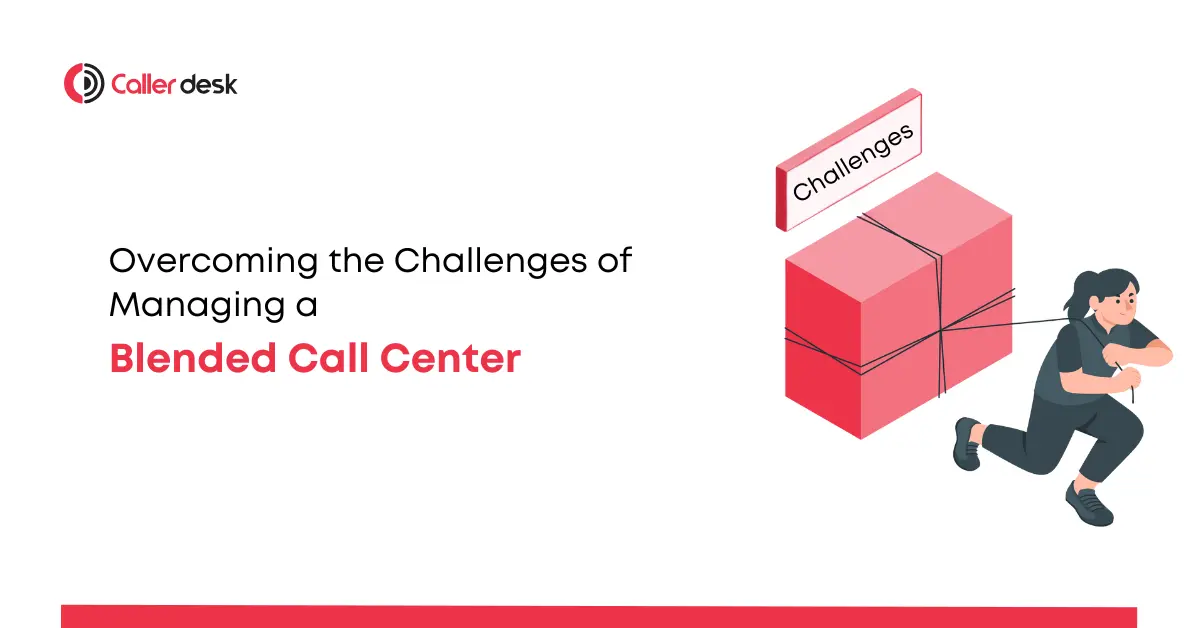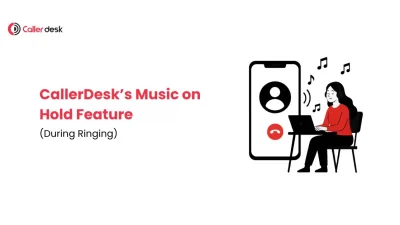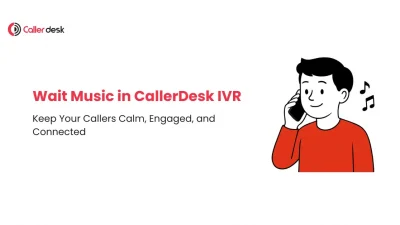Running a blended call center, where agents seamlessly manage both inbound (customer service) and outbound (sales or follow-ups) calls, is a proven way to optimize resources and deliver superior customer experiences. This dual-tasking model ensures no agent is underutilized during slow periods, and it improves response times during peak hours. However, implementing and managing a blended call center comes with its fair share of challenges.
Balancing fluctuating call volumes, maintaining high agent morale, and handling complex scheduling issues are just a few hurdles businesses face when adopting this model. Addressing these challenges requires a combination of robust technology, strategic planning, and effective management practices.
In this guide, we’ll explore the most common challenges in managing a blended call center and provide actionable strategies to overcome them. By tackling these issues head-on, businesses can create a call center environment that enhances productivity, supports agents, and exceeds customer expectations.
Why Blended Call Centers Are a Game-Changer
Before diving into the challenges, let’s examine why blended call centers are gaining popularity:
- Resource Optimization: By utilizing agents for both inbound and outbound calls, businesses maximize productivity and eliminate downtime during off-peak hours.
- Enhanced Customer Experiences: A blended model ensures customers are always attended to quickly, whether they’re calling in with an issue or receiving a follow-up call.
- Scalable Operations: Blended call centers can adapt more easily to changes in call volume, business needs, or market trends.
For instance, an e-commerce platform can shift agents from handling order inquiries to outbound calls for abandoned cart recovery, ensuring every interaction contributes to business growth.
Common Challenges in Blended Call Centers (And How to Overcome Them)
1. Technical Disruptions: Ensuring Reliable Systems
Blended call centers rely heavily on technology to manage and route calls efficiently. A technical glitch, such as downtime in an Automatic Call Distributor (ACD) or Customer Relationship Management (CRM) tool, can disrupt operations, leading to lost productivity and dissatisfied customers.
Solution Strategies:
- Invest in Cloud-Based Solutions: Cloud platforms like CallerDesk offer robust reliability with real-time updates and minimal downtime. Their scalable infrastructure ensures that technical hiccups don’t derail operations.
- Backup Systems: Always have redundancy protocols in place, such as secondary servers, to handle system failures without interrupting service.
- Proactive Maintenance: Regular software updates and hardware checks can prevent issues before they arise, ensuring smooth operations around the clock.
2. Balancing Customer Service and Sales: Multi-Skilled Agents
Handling customer service inquiries requires empathy and problem-solving skills, while outbound sales calls demand persuasive communication and confidence. Asking agents to excel in both roles can lead to performance issues if not managed carefully.
Solution Strategies:
- Comprehensive Cross-Training: Develop tailored training programs that teach agents both empathetic listening for inbound calls and effective sales techniques for outbound calls. Use role-playing exercises to simulate real-world scenarios.
- Smart Call Routing: Implement intelligent systems that assign calls based on agent strengths. For example, CallerDesk’s skill-based routing ensures that customer service-focused agents handle inquiries, while sales-focused agents manage outbound campaigns.
- Performance Analytics: Use analytics to identify areas where agents excel or struggle and offer targeted coaching to address skill gaps.
Example: A financial services company could train agents to upsell premium credit card plans during inbound customer service calls about account inquiries, blending sales with support effectively.
3. Fluctuating Call Volumes: Maintaining Productivity
Call volumes can vary widely based on factors like marketing campaigns, seasonal trends, or unforeseen events. Balancing these fluctuations while maintaining agent productivity is a critical challenge.
Solution Strategies:
- Real-Time Workforce Management Tools: Tools that monitor live call data can help managers adjust staffing dynamically based on call traffic.
- Multichannel Support: Encourage agents to handle email, chat, or social media queries during low call periods. This ensures agents remain productive even when call volumes drop.
- Forecasting and Scheduling: Use historical data to predict peak periods and create schedules that align agent availability with anticipated demand.
Example: During a holiday season sale, a retail call center can anticipate higher inbound queries and schedule additional agents to ensure prompt responses, while still dedicating some to outbound sales follow-ups.
4. Agent Fatigue: Promoting Well-Being and Morale
Switching between inbound and outbound calls can be mentally taxing for agents, leading to fatigue and burnout. Over time, this can result in reduced performance and higher attrition rates.
Solution Strategies:
- Break Schedules: Incorporate regular breaks into agent schedules to allow them time to recharge between shifts.
- Gamification: Introduce rewards for meeting performance goals, such as handling a set number of calls or achieving a high customer satisfaction score.
- Mental Health Resources: Provide access to counseling or stress management workshops to help agents cope with job-related pressures.
Example: A call center could run monthly competitions where agents earn rewards for exceptional performance in both inbound and outbound call handling, boosting engagement and morale.
5. Transitioning to a Blended Model: Avoiding Disruption
Shifting from a traditional call center to a blended model can disrupt workflows, especially if agents are unfamiliar with the new systems or roles.
Solution Strategies:
- Phased Implementation: Roll out the blended model gradually, starting with a pilot team before scaling to the entire call center.
- Comprehensive Onboarding: Provide hands-on training and easy-to-understand resources to help agents adapt quickly.
- Ongoing Support: Assign mentors or team leads to guide agents during the transition phase and address concerns promptly.
Example: A healthcare call center transitioning to a blended model can train a small team to handle both appointment scheduling (inbound) and patient outreach (outbound) before scaling the approach across departments.
Why CallerDesk Is Your Perfect Partner for Blended Call Centers
Managing a blended call center becomes significantly easier with the right technology partner. CallerDesk offers:
- Dynamic Call Routing: Automatically assigns tasks to agents based on their availability and expertise.
- Omnichannel Support: Enables agents to handle multiple communication channels, including calls, emails, and chats, from a unified dashboard.
- Advanced Analytics: Provides actionable insights into call center performance, helping managers make data-driven decisions.
- 24/7 Support: Ensures your operations run smoothly with round-the-clock assistance.
Success Story: A SaaS company using CallerDesk reduced average call resolution time by 25% after implementing its call blending solution, leading to a 30% increase in customer satisfaction scores.
Conclusion
Blended call centers are the future of customer service and sales. While challenges like fluctuating call volumes, agent fatigue, and technology disruptions are real, they can be overcome with the right strategies and tools. CallerDesk’s advanced call blending solution equips your business to navigate these challenges effortlessly, ensuring efficiency, productivity, and customer satisfaction.
Ready to transform your call center operations? Contact CallerDesk today for a free demo and see how our call blending solution can drive your business forward.
Frequently asked questions
1. How does CallerDesk help blended call centers?
CallerDesk provides advanced features like dynamic call routing, omnichannel support, and real-time analytics to help businesses streamline their blended call center operations. With 24/7 support and scalable solutions, CallerDesk ensures businesses can manage inbound and outbound calls effectively.
2. Can blended call centers improve customer satisfaction?
Yes, blended call centers reduce wait times, provide faster resolutions, and ensure personalized service by equipping agents with the right tools and customer data, which leads to higher customer satisfaction.
3. How does call blending enhance agent productivity?
Call blending reduces idle time by ensuring agents stay engaged during low call volumes. It allows them to switch between inbound and outbound calls seamlessly, optimizing workload and boosting productivity.
4. What industries benefit most from blended call centers?
Industries like e-commerce, healthcare, banking, SaaS, and telecommunications benefit significantly from blended call centers. These industries often deal with fluctuating call volumes and require a balance of customer service and outbound sales efforts.
5. How does real-time monitoring improve blended call center performance?
Real-time monitoring provides insights into agent performance, call traffic, and customer behavior. Managers can use this data to adjust staffing, improve training, and optimize workflows.
6. Is transitioning to a blended call center difficult?
Transitioning can be challenging but manageable with the right approach. Gradual implementation, comprehensive training, and effective communication can ensure a smooth transition to a blended call center model.





